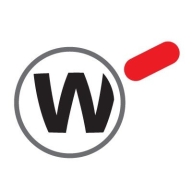

Microsoft Defender for Endpoint and WatchGuard EPDR are popular endpoint protection solutions. Microsoft Defender for Endpoint seems to have the upper hand due to its integration within the Windows ecosystem and cost-effective pricing.
Features: Microsoft Defender for Endpoint offers seamless integration with Windows OS, automated investigation, and remediation capabilities. WatchGuard EPDR provides predictive threat intelligence, the ability to contain threats autonomously, and advanced threat detection capabilities.
Room for Improvement: Users suggest Microsoft Defender for Endpoint could improve offline protection, reduce alert complexity, and simplify reporting. WatchGuard EPDR users highlight the need for enhanced reporting, a more intuitive navigation system, and better offline capabilities.
Ease of Deployment and Customer Service: Microsoft Defender for Endpoint is known for straightforward deployment within the Microsoft ecosystem, but customer service can be lacking. WatchGuard EPDR offers flexible deployment options and exceptional customer service, particularly from the support team.
Pricing and ROI: Microsoft Defender for Endpoint is considered cost-effective, especially for businesses already using Microsoft 365, with a high ROI due to bundled offerings. WatchGuard EPDR, although praised for advanced features, is viewed as more expensive, resulting in a slower ROI.
Without detection and protection measures, organizations would face substantial payments and reputational damage, including the necessity to inform customers about data breaches, potentially leading to loss of business.
We have seen a return on investment when using Microsoft Defender for Endpoint, as it saves labor by reducing the need for staff to focus on it.
The biggest return on investment for me when using Microsoft Defender for Endpoint is the time saving.
I can say that knowing you have a product like WatchGuard EPDR that's working 24/7 to help protect students in a school is good for ROI.
The level-one support seems disconnected from subject matter experts.
I rate Microsoft support 10 out of 10.
Due to our size, we don't have access to direct technical support, but the knowledge base, Microsoft Learn, and the articles available are really good.
They create a case, tell me to refer to articles, and if not resolved, they take a remote session to solve the issue.
Technical support for Panda Adaptive Defense 360 is provided by the reseller, and they also do preventive maintenance yearly.
The technical support from WatchGuard would rate at about an eight on a scale of 1 to 10, where one is the worst technical support and 10 is the best technical support.
We managed to scale it out in a short amount of time, with two months of planning and three months of implementation on 10,000 computers.
Microsoft Defender for Endpoint is scalable enough to handle various devices across environments, whether they are laptops, Android devices, or operating in hybrid environments.
Compatibility is its main feature.
WatchGuard EPDR is very competitive regarding its scalability.
I haven't seen any outages with Microsoft.
I rate Defender 10 out of 10 for stability.
Defender for Endpoint is extremely stable.
It is very stable with no hanging problems.
WatchGuard EPDR is a very stable solution and is not resource intensive.
The stability is approximately a seven to eight out of ten.
Repeated interactions are necessary due to Level One's lack of tools and knowledge, hindering efficient problem-solving and negatively impacting our experience with Microsoft support.
In contrast, competing products offer reduced pricing for long-term commitments, which makes it difficult for us in that environment.
We use Microsoft partners to help govern the platform, and as part of an alliance, we want to gather data from each tenant and combine them for a complete view.
Panda Adaptive Defense 360 is not compatible with certain network devices like access points, switches, or routers, which would be an area for improvement.
Other firewalls allow adding categories and in-app controls which WatchGuard currently lacks.
An area for improvement would be the software deployment to seamlessly deploy software packages across multiple machines simultaneously.
Given our extensive Microsoft licensing, transitioning to Defender for Endpoint did not affect licensing costs.
It costs $15 per VM for the P2 plan, which is seen as affordable for customers.
The pricing, setup, and licensing were very easy and simple.
It is worth the money and provides good return on investment.
The pricing is slightly high, but the product quality justifies it.
Regarding pricing, I am not sure because I did not compare it with other antivirus; maybe it is pricey.
Defender for Endpoint's coverage across different platforms in our environment is pretty good. We have devices running Linux, Mac OS, Windows, iOS, and Android. It covers all of them.
Microsoft Defender for Endpoint provides a unified management interface allowing customers to manage their on-premises and hybrid infrastructures from a single pane.
One of the best features of Microsoft Defender for Endpoint is its database for identifying zero-day attacks or malware attacks.
The cloud of WatchGuard lets me see all my devices, updating me to minute levels with detailed information, such as patch status and vulnerabilities.
The detection capabilities for malicious activities are effective.
The EDR has a high accuracy rate with only a few false positives.
| Product | Market Share (%) |
|---|---|
| Microsoft Defender for Endpoint | 9.9% |
| WatchGuard EPDR | 2.1% |
| Other | 88.0% |


| Company Size | Count |
|---|---|
| Small Business | 79 |
| Midsize Enterprise | 34 |
| Large Enterprise | 87 |
| Company Size | Count |
|---|---|
| Small Business | 26 |
| Midsize Enterprise | 8 |
| Large Enterprise | 1 |
Microsoft Defender for Endpoint is a comprehensive security solution that provides advanced threat protection for organizations. It offers real-time protection against various types of cyber threats, including malware, viruses, ransomware, and phishing attacks.
With its powerful machine-learning capabilities, it can detect and block sophisticated attacks before they can cause any harm. The solution also includes endpoint detection and response (EDR) capabilities, allowing organizations to quickly investigate and respond to security incidents. It provides detailed insights into the attack timeline, enabling security teams to understand the scope and impact of an incident.
Microsoft Defender for Endpoint also offers proactive threat hunting, allowing organizations to proactively search for and identify potential threats within their network. It integrates seamlessly with other Microsoft security solutions, such as Microsoft Defender XDR, to provide a unified and holistic security approach. With its centralized management console, organizations can easily deploy, configure, and monitor the security solution across their entire network.
Microsoft Defender for Endpoint is a robust and scalable security solution that helps organizations protect their endpoints and data from evolving cyber threats.
EDR for continuous monitoring that prevents the execution of unknown processes. Behavioral analysis and detection of IoAs (indicators of attack) scripts, macros, etc.
Automatic detection and response for targeted attacks and in-memory exploits. Endpoint protection capabilities such as URL filtering, device control and managed firewall.
Zero-Trust Application and Threat Hunting features delivered as managed services. Lightweight agent and easy-to-use Cloud-based console with detailed reporting.
We monitor all Endpoint Protection Platform (EPP) reviews to prevent fraudulent reviews and keep review quality high. We do not post reviews by company employees or direct competitors. We validate each review for authenticity via cross-reference with LinkedIn, and personal follow-up with the reviewer when necessary.